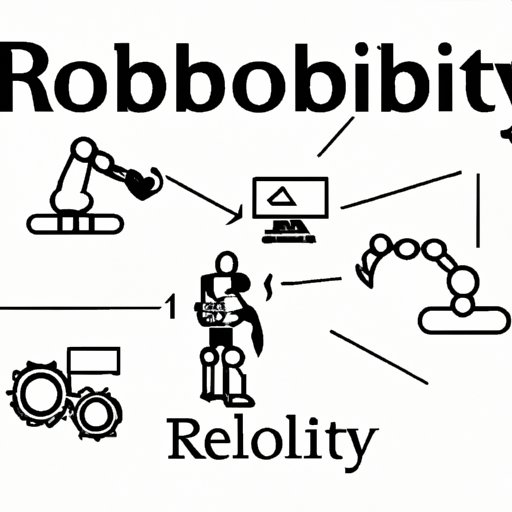Introduction
Robotics is a rapidly evolving field that has been gaining more attention in recent years. The term “robotics” encompasses a wide range of technologies, from robotic arms used in industrial automation to autonomous vehicles used for transportation. As more people become aware of robotics and its potential applications, it is important to understand what robotics means and how it has evolved over time.
At its core, robotics is the science of designing, constructing, and operating robots. The goal of robotics is to develop machines that are capable of performing tasks with precision and accuracy. Robots can be programmed to carry out complex operations and respond to their environment in ways that humans cannot. This makes them incredibly useful in a variety of industries, including manufacturing, healthcare, and military operations.
A Historical Overview of Robotics
The concept of robotics has been around for centuries. Early examples of robots include mechanical automatons built by ancient Greeks and Chinese civilizations. In the 18th century, French inventor Jacques de Vaucanson created a flute-playing mechanical duck. By the early 20th century, inventors were experimenting with electric motors and hydraulic systems to create automated machines.
In the 1950s and 1960s, the first modern robots were developed. These robots were able to move and manipulate objects using sensors, computer programming, and feedback loops. This marked the beginning of the robotics revolution, which has continued to evolve ever since.

Exploring the Impact of Robotics on Society
Robotics technology has had a profound impact on society. Automated robots are used in many industries to increase productivity, reduce costs, and improve safety. For example, robots are used in factories to assemble products and package goods. They can also be used to perform dangerous tasks such as welding, painting, and hazardous material handling.
Robots can also be used to provide services such as healthcare, education, and customer service. For instance, robots can be used to assist doctors in performing surgery or to teach students in online classrooms. Robots can also provide personalized customer service in retail stores and restaurants.
Despite these benefits, there are also challenges associated with robotics technology. One of the biggest concerns is the potential displacement of human workers. As robots become more advanced and capable of performing more complex tasks, there is a risk that they may replace human workers in certain industries.

Examining Current Trends in Robotics Technology
Robotics technology is constantly evolving and there are several different types of robots being developed. Industrial robots are used in factories to automate processes and increase efficiency. Service robots are used to provide services such as delivery, cleaning, and security. Medical robots are used to assist doctors in performing surgery and other medical procedures.
Military robots are used for surveillance, reconnaissance, and bomb disposal. These robots are usually equipped with sensors, cameras, and weapons to enable them to navigate hostile environments and detect potential threats. Finally, consumer robots are designed for entertainment and educational purposes.

The Ethics and Safety of Robotics
As robots become increasingly sophisticated and capable of performing complex tasks, ethical and safety considerations must be taken into account. There are a number of potential ethical issues associated with robotics technology, such as the potential for robots to be used for malicious purposes or to exploit humans. To address these issues, a number of organizations have developed ethical guidelines for the development and use of robots.
“We need to ensure that the ethical principles embedded in robots are consistent with the values of human society,” said Dr. Alan Winfield, professor at the University of the West of England. “We must also ensure that robots are safe and secure, and that their use does not lead to any kind of harm.”
In addition to ethical considerations, robots must also adhere to safety regulations. Governments around the world have implemented safety standards for robots, including restrictions on how robots can be used and rules for how robots should interact with humans. These regulations are designed to protect both humans and robots.
What Does the Future Hold for Robotics?
Robotics technology is advancing rapidly, and the possibilities for future applications are virtually limitless. Potential applications include self-driving cars, robotic assistants, and intelligent home appliances. Robotics could also be used to explore other planets and the ocean depths, as well as to monitor and protect the environment.
“The future of robotics is extremely exciting,” said Dr. Maja Mataric, professor at the University of Southern California. “Robots will continue to play an increasingly important role in our lives and have the potential to profoundly transform our society.”
Conclusion
Robotics is a rapidly evolving field with a long history and a bright future. From industrial automation to service robots, this technology is having a profound impact on society. It is essential to understand the implications of robotics technology and the ethical and safety considerations associated with its use. As robotics technology continues to advance, the possibilities for its applications are virtually limitless.
(Note: Is this article not meeting your expectations? Do you have knowledge or insights to share? Unlock new opportunities and expand your reach by joining our authors team. Click Registration to join us and share your expertise with our readers.)
